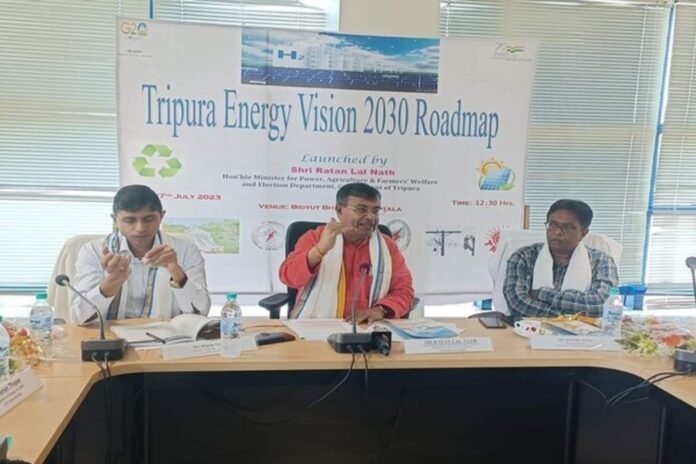Tripura Power Minister Ratan Lal Nath announced an ambitious target for the state to generate 135 Mega Watts (MW) of power from clean solar energy by the year 2025. During the launch of ‘Tripura Energy Vision 2030’ at Agartala Bidyut Bhavan, the Minister highlighted the urgency of increasing solar power generation to meet the growing energy demands. To facilitate this, the government has already signed a Memorandum of Understanding (MoU) with NTPC for establishing a 130-MW floating solar power plant on Dumbur Lake. The project is currently in progress and expected to bolster the state’s clean energy capacity significantly.
Praising the government’s efforts in renewable energy, Nath stated that solar power generation had risen from 6 MW to 12 MW over the past five years. Building on this success, the state aims to produce 500 MW of solar energy by 2030, underlining its commitment to sustainable and environment-friendly power sources. The administration is actively exploring additional locations for setting up more solar plants across Tripura to realize this goal.
The Minister emphasized the crucial role of solar energy in meeting the needs of patients suffering from Thalassemia and anemia, whose lives depend on regular blood transfusions. Furthermore, the availability of clean energy would enable adequate gas-based thermal power supply to support the industrial sector in the state.
In line with its vision to promote renewable energy, the government plans to generate clean power in the existing 1158 gram panchayats and village councils. Such a decentralized approach is expected to lead to reduced power tariffs and ensure energy security for rural areas. Moreover, it will contribute to the overall socio-economic development of the state.
During the last five years, the government has achieved significant milestones in power infrastructure development. Notably, three new 132 KV sub-stations were established, covering an expenditure of Rs. 80 crores, along with the installation of 132 KV transmission lines spanning 54 kms at a cost of Rs. 39 crores. Additionally, 22 new 33 KV sub-stations were set up, amounting to Rs. 132 crores, among other accomplishments.
The Power Minister also expressed the government’s commitment to prioritize Agartala, the state capital, in its efforts to ensure uninterrupted power supply. To achieve this, the feasibility of laying underground power cables is being explored, especially to address the challenges posed during the monsoon season.
‘Tripura Energy Vision 2030’ is a comprehensive plan formulated based on a survey conducted by the Research Triangle Institute (RTI). The survey indicated that Tripura’s power requirement is projected to reach 692 MW by 2030. The vision aims to address the state’s future power needs strategically, promoting a greener and more sustainable energy ecosystem.
The announcement of Tripura’s ambitious solar energy targets has received widespread appreciation from various stakeholders, including industry leaders and environmental advocates. The state’s dedication to clean energy demonstrates its commitment to a green future and sets a positive example for other regions in the country. With continued support and effective implementation, Tripura is poised to become a leading advocate for renewable energy adoption and a model for sustainable development in India.




